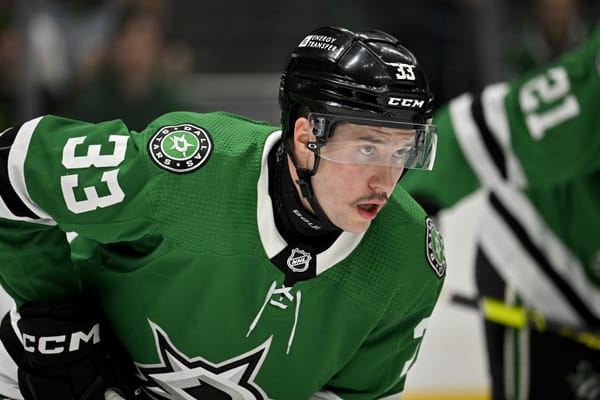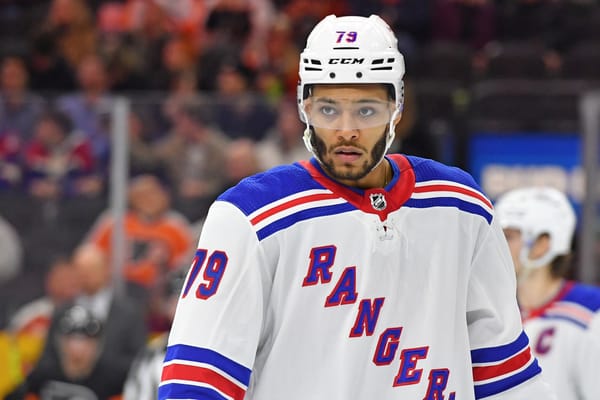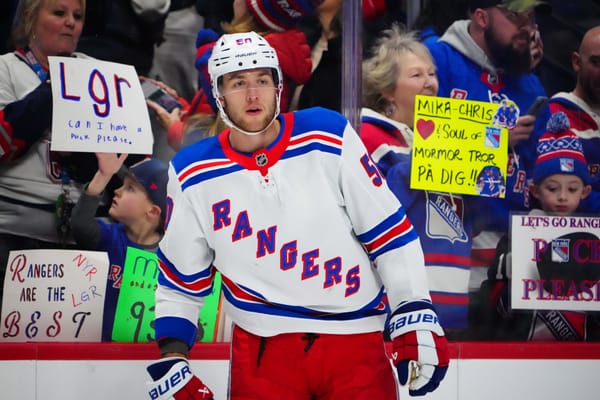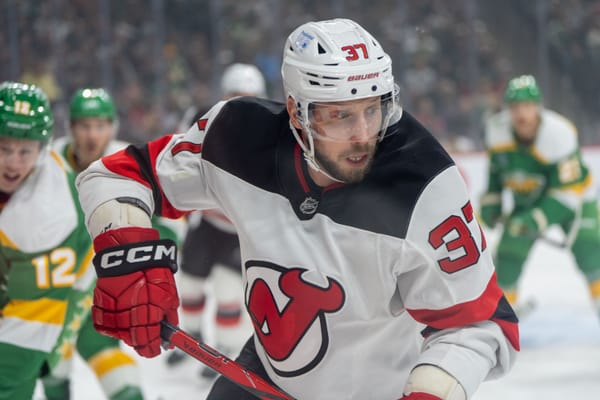Thoughts on Thursday: Enforcers, College Free Agents, and the Trading Deadline
1. When the Rangers let the free agent frenzy come and go without resigning Tanner Glass or bringing in another “enforcer” to replace him, it seemed to signal the end of an era on Broadway. From the days of pure fighters like Tie Domi, Darren Langdon, Sandy McCarthy, and Colton Orr, to agitators who could play like Sean Avery, Derek Dorsett, and Dan Carcillo, or “play” in the case of Glass, the team has always had somebody on the roster who would drop their gloves at a moments notice. While it appeared the organization had moved beyond that stage, Jeff Gorton decided to extend a professional tryout to Bobby Farnham.
The arguments against fighting and the downsides of having a pure fighter on a roster have been made hundreds of times, so there’s no sense in diving into that debate. What is worth pondering though, is the question of why Alain Vigneault feels his teams need somebody who can’t keep up with the speed and skill of the NHL, but are willing to fight at the drop of a hat.
Even if Farnham’s odds of making the roster are miniscule, he wouldn’t have agreed to a PTO with the Blueshirts if he had no chance of making the team. Likewise, Jeff Gorton wouldn’t have invited Farnham to camp if he didn’t see some scenario where he thinks Farnham can help the team. Those two ideas are reason enough to be a bit worried about his presence at camp, regardless of how likely he is to make the squad. My thoughts on him being invited to camp are here, but they’re mostly the same as every other goon the Rangers bring in.
Gretzky had McSorley, so I suppose Kerfoot's going to need someone in Hartford as well https://t.co/DxciftMRU6
— Jack McKenna (@jmckenna1610) August 22, 2017
2. Unlike some other enforcers that the team has brought in, Farnham doesn’t have any sort of outstanding resume. He was an undrafted free agent after playing in an Ivy League school (Brown University to be specific) and has spent the majority of career toiling in the minor leagues. As an undrafted college free agent, Farnham’s career path has been what can be expected from most of his contemporaries. Despite the notion that there are always college free agents with NHL upside becoming available each summer, that’s rarely the case.
Players like Martin St. Louis and Dan Boyle went on to have borderline Hall of Fame worthy careers, so they stick out as obvious exceptions. However, even the players who only appear in a handful of games are exceptions to the rule as well. Players like Peter Harrold, Jayson Megna, and Aaron Volpatti, all of whom had cups of coffee in the NHL before washing out of the league, are exceptions as well. Despite having lessons and past experiences to draw from, fans and media alike unfairly hype up each year’s crop of undrafted free agents, and they almost always end up being disappointed.
Even more so over the last few years, none of the most sought after college free agents have gone on to accomplish much in the NHL. Matt O’Connor is the most recent example of a marginal prospect that was hyped up during his courting period and has gone on to accomplish nothing.
Before he signed with the Ottawa Senators, many in the hockey world were hyping him up as an NHL-ready backup with starting potential. Since then, O’Connor has gone on to start one NHL game, put up laughably bad numbers in the AHL (.895 Sv% in 71 games), and wasn’t even tendered a qualifying offer by the Senators this past summer. He now finds himself in the Nashville Predators organization, where he’s likely to spend the year as the team’s #3 goalie behind Juuse Saros and Pekka Rinne.
All of this is to say that getting your hopes for undrafted college free agents is never a good idea. Although he may not be an undrafted player, Alex Kerfoot’s talent level is within the same tier as the average UDFA, and would most likely open up the 17-18 season in the AHL for 30 of the league’s 31 franchises. After signing with the Colorado Avalanche yesterday, Kerfoot may have found the one franchise with a dearth of talent so great that he could crack the opening night lineup. All of the above applies to Neal Pionk and his chances of impacting the Rangers’ defense corps as well.
3. Training camp is still three weeks away from beginning, and the time has already come for Jeff Gorton to being evaluating which players to target when the trade deadline rolls around. After failing to replace Derek Stepan and opting against bringing in another center to replace him, the Blueshirts are seemingly content to training camp with Mika Zibanejad, Kevin Hayes, and a question mark comprising the team’s spots down the middle throughout then top 9. Unless Lias Andersson wins the third line center spot out of camp and proves himself capable of holding it throughout the season, Gorton will need make a move for a proven center during the season.
Depending on how the season plays out, any number of players that may not be available right now could be had at the right price in February. Tyler Bozak of the Toronto Maple Leafs would make sense to make a move for now and at the deadline. With a modest salary cap hit of $4.2 million that expires after the season ends, Bozak would be an ideal stopgap candidate to make the Rangers a Stanley Cup contender rather than a hopeful.
Other players like Henrik Sedin of the Vancouver Canucks, Joe Thornton of the San Jose Sharks, and Paul Stastny of the St. Louis Blues are three high profile names that could become available pending their respective teams’ success throughout the season.
The Canucks are going to be bad, but the Sedins have always been bullish about spending their entire career in Vancouver, and acquiring Henrik would likely require bringing in his brother Daniel as well. Thornton and Stastny both play for teams likely to be in the playoff hunt, both down seasons from both organizations could push them into a selling mode when the deadline rolls around.
Whoever they might look to land in a trade, it would be ideal if the player was due to be an unrestricted free agent at the end of the season. The upcoming season will be a make-or-break campaign for Kevin Hayes, and how he performs could change how New York approaches next offseason.
If he shines in his new role as the team’s second line center, Jeff Gorton can lock him in to a contract for the forseeable future, and have Zibanejad, Hayes, and Andersson as the team’s top centers. If he struggles, it would be best for the team to move on from Hayes, and trade him in the hopes of landing a true top six center to anchor the team’s depth down the middle.





